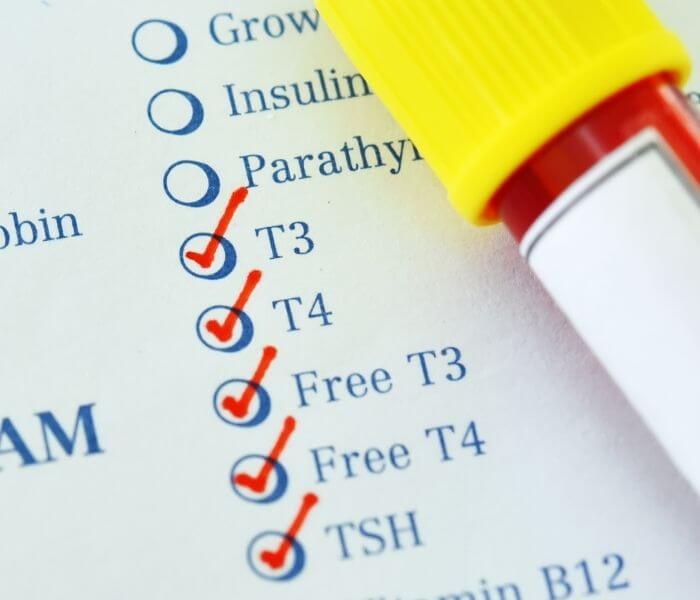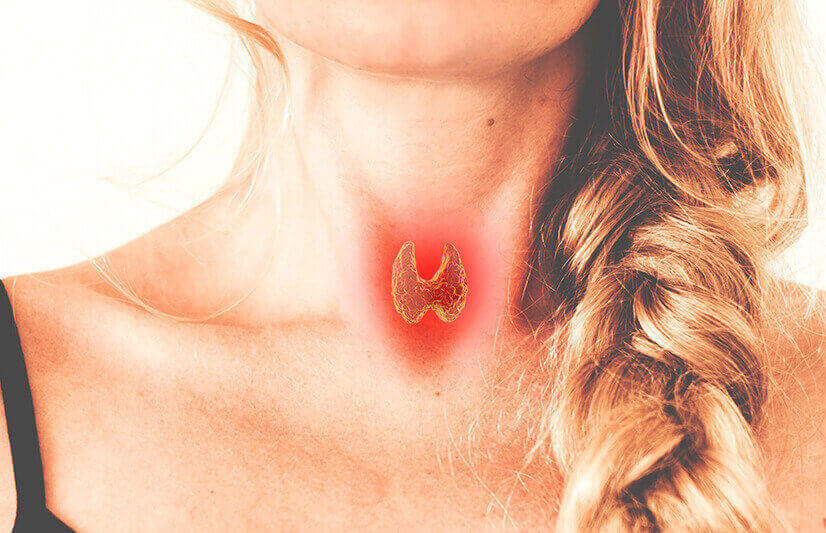4 mins read
You Have an Overactive Thyroid – Now What?

What is An Overactive Thyroid?
An overactive thyroid or hyperthyroidism is a common hormonal condition, whereby your thyroid gland produces too much thyroid hormone. If you have been diagnosed with this condition, you have probably already experienced some of the symptoms associated with an overactive thyroid, such as:
- Nervousness
- Changes in mood
- Hyperactivity
- Anxiety
- Fatigue
- Weakness
- Sleep disturbance
- Heat sensitivity
- Irregular heartbeat
- Swelling in your neck
These symptoms are caused by the extra levels of hormones circulating in your body. Women are more likely to develop an overactive thyroid than men, with the typical age of onset between 20 and 40 years of age.
Lifestyle Changes You Can Make
Alongside medical intervention, simple adaptations to your lifestyle can help to manage the symptoms and give you a positive outlook following your diagnosis.
Smoking
Smoking has been identified as a risk factor for the development of Graves’ hyperthyroidism in women. However, the mechanism by which smoking causes Graves’ disease is still unknown.
If you are a smoker, giving up is beneficial for all aspects of your health. Smoking can affect your physical fitness, fertility and make you more susceptible to disease. You are particularly predisposed if you are also female and Graves’ disease runs in your family, so you should certainly consider quitting.
Diet
Eating the right foods in the correct proportions can go a long way in helping you to stay healthy. A diet which is healthy, balanced and varied will help to keep you in optimal health.
Some people with an overactive thyroid crave carbohydrate-rich foods. Carbohydrates give us the energy we need to carry out our daily tasks and functions including breathing. There are three types:
- Sugar
- Starch
- Fibre
Carbohydrates, which are high in starch and fibre, release energy slowly and steadily over a longer period, unlike sugary options which give a quick burst of energy. When eating carbohydrates try to choose those which are starchy and high in fibre like:
- Wholemeal bread
- Whole wheat pasta
- Brown rice
- Skin-on potatoes
You should also ensure there is plenty of fibre in your diet, too. Fibre helps to keep our digestive system working properly and prevent constipation. Plus, foods high in fibre can make us feel fuller for longer preventing snacking, choose options such as:
- Muesli
- Bran flakes
- Pulses
- Fruit
- Vegetables
- Nuts and seeds
Exercise
Exercise in individuals with an overactive thyroid can help to manage anxiety and sleep disturbances which are common symptoms. Stress is also a major factor in the development of Graves’ disease. Stressful life events such as bereavement, divorce and job redundancy have often been shown to precede the onset of Graves’ disease.
Aerobic exercise like walking, jogging, swimming and cycling have all been shown to improve emotional states and relieve stress. Exercise can also be a great way to socialise with people which can also help to bring stress levels down. Maybe try a new exercise class or join a local gym with a friend. However, if you are yet to have an overactive thyroid diagnosed, you shouldn’t overdo your exercise routine as your heart and metabolic rate may already be increased when at rest. At first, opt for lower intensity exercises such as walking or yoga and speak with a medical professional.
Relax
Learning relaxation techniques will help you to remain positive after your diagnosis. Achieving balance in your life and learning to cope with stress can help you to maintain your mental wellbeing. Yoga can be helpful. as can meditation, there may be local groups in your area which specialise in relaxation techniques.
Receiving a hyperthyroidism diagnosis can feel like a blow at first, but with the correct management and some changes to your lifestyle, you should be able to lead a normal, healthy life.
Could I Have Prevented It?
An overactive thyroid can be caused by several factors, including:
Graves’ Disease
Around 75% of hyperthyroidism cases are caused by Graves’ disease, an autoimmune condition where the immune system attacks the thyroid gland by mistake.
The condition is more common in young and middle-aged women and is often familial. Smoking is a risk factor for developing Graves’ disease. Stress is also known to lead to the development of the autoimmune condition which also causes an overactive thyroid. “Stress plays a role in causing Graves’ disease, so reducing stress is often a good idea along with a healthy diet”, explains Lyn Mynott, CEO of Thyroid UK.
Nodules
Thyroid nodules are a less common cause of an overactive thyroid. The nodules are not usually cancerous, but do contain excess thyroid tissue which leads to an overproduction of thyroid hormones.
Thyroid nodules usually affect people over the age of 60.
Other Causes
- Medication – some medications contain iodine. Iodine is essential for the production of thyroid hormones. So, high levels of iodine can increase the production of thyroid hormones subsequently causing an overactive thyroid.
- Thyroiditis – inflammation of the thyroid gland leading to extra thyroid hormones being made.
- Thyroid cancer – very rarely a cause of hyperthyroidism.
- Increased levels of human chorionic gonadotrophin – usually occurs during early pregnancy, multiple pregnancies or molar pregnancies.
- Pituitary adenoma – a non-cancerous growth on the pituitary gland in the brain which can alter the amount of thyroid hormones produced.
- Health scores calculated
Close
Article references
-
Holm, I, A et al. (2005). Smoking and Other Lifestyle Factors and the Risk of Graves’ Hyperthyroidism. American Medical Association: 165.
-
Pijl, H et al. (2001). Food Choice in Hyperthyroidism: Potential Influence of the Autonomic Nervous System and Brain Serotonin Precursor Availability. The Journal of Clinical Endocrinology and Metabolism: 86(12), pp 5848-5853.
-
Smith, T, J and Hegedüs, L. (2016). Graves’ Disease. N Engl J Med: 375, pp 1552-65.
-
Weetman, A, P. (2000). Graves’ Disease. The New England Journal of Medicine: 343(17), pp 1236-1248.
This information has been medically reviewed by Dr Thom Phillips
Thom works in NHS general practice and has a decade of experience working in both male and female elite sport. He has a background in exercise physiology and has published research into fatigue biomarkers.

Dr Thom Phillips
Head of Clinical Services
Related articles
Like this article? Here are some more based on similar topics.





